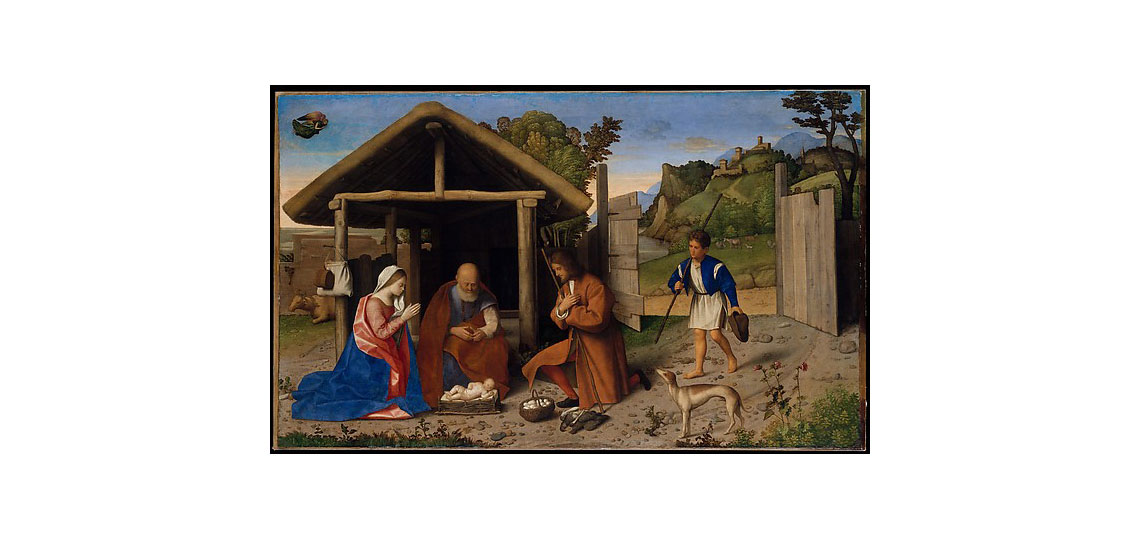Nativity scenes are often a common sight in December as Christmas approaches. From children’s plays to yard displays, the visual traditions of the nativity still endure from the thirteenth century, when St. Francis of Assisi was credited with creating the first nativity scene.
In the Glory of Venice: Masterworks of the Renaissance exhibition, Vincenzo Catena presents us with his version of the story with his The Adoration of the Shepherds, painted after 1520. In the painting, we see familiar sights of baby Jesus in a manger, and Mary and Joseph surrounding him along with the adoring shepherds. A few animals and an angel high above take a peek at the humble rural scene. Catena also manages to sneak in symbolic elements, such as the red roses in the foreground to the right, foreshadowing Christ’s passion.
Although the subject matter may come from a long tradition, the vibrant colors, softly modeled figures, unifying light, and an emphasis on nature all show Catena’s interest in the innovations of Venetian painting during the Renaissance. The large canvas and exquisite use of oil paint help to draw us into the scene as respectful participants in this holy story that reminds us of the Christmas season.
Glory of Venice is on view through February 12. It is included with general admission; free for members.
Image: Vincenzo Catena, Italian, active by 1506–died 1531. The Adoration of the Shepherds. Probably after 1520. Oil paint on canvas. The Metropolitan Museum of Art, New York: Purchase, Mrs. Charles S. Payson Gift, Gwynne Andrews Fund, special funds, and other gifts and bequests, 1969 (69.123)

